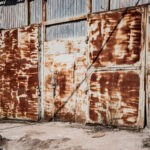Update on Murder Charges in Bangladesh Factory Building Collapse

It’s been more than two years since Rana Plaza, a building in Bangladesh that contained several clothing factories, collapsed, killing more than 1,100 people’mainly female workers.
After a 2013 report on the incident condemned the factory owners and recommended formal charges against the building owner and owners of five factories in the building, the police filed murder charges in what they described as a ‘mass killing’ against 41 people, including:
- Sohel Rana, the building’s owner
- Rana’s parents
- The owners of five factories in the building
- At least a dozen government officials.
On Dec. 21, 2015, a court formally accepted these murder charges.
But although investigators initially said the defendants would be charged with culpable homicide, they instead shifted to more severe charges after the investigation found that Rana, his staff and the factory owners had forced workers to enter the building just before it collapsed’even though the workers feared doing so because major cracks had developed in the structure a day earlier.
The maximum penalty for someone convicted of murder is a death sentence, while the maximum punishment for culpable homicide is seven years in jail.
In a separate case, the defendants also face charges for violating safety rules as to the building, which was meant for office space and retail stores. However, more floors were added illegally and transformed into factories.
The collapse of Rana Plaza led to an international outcry and to a commitment by Western retailers to widespread inspections of Bangladesh’s thousands of clothing factories. However, these inspections were hindered by resistance from both factory owners and government officials.